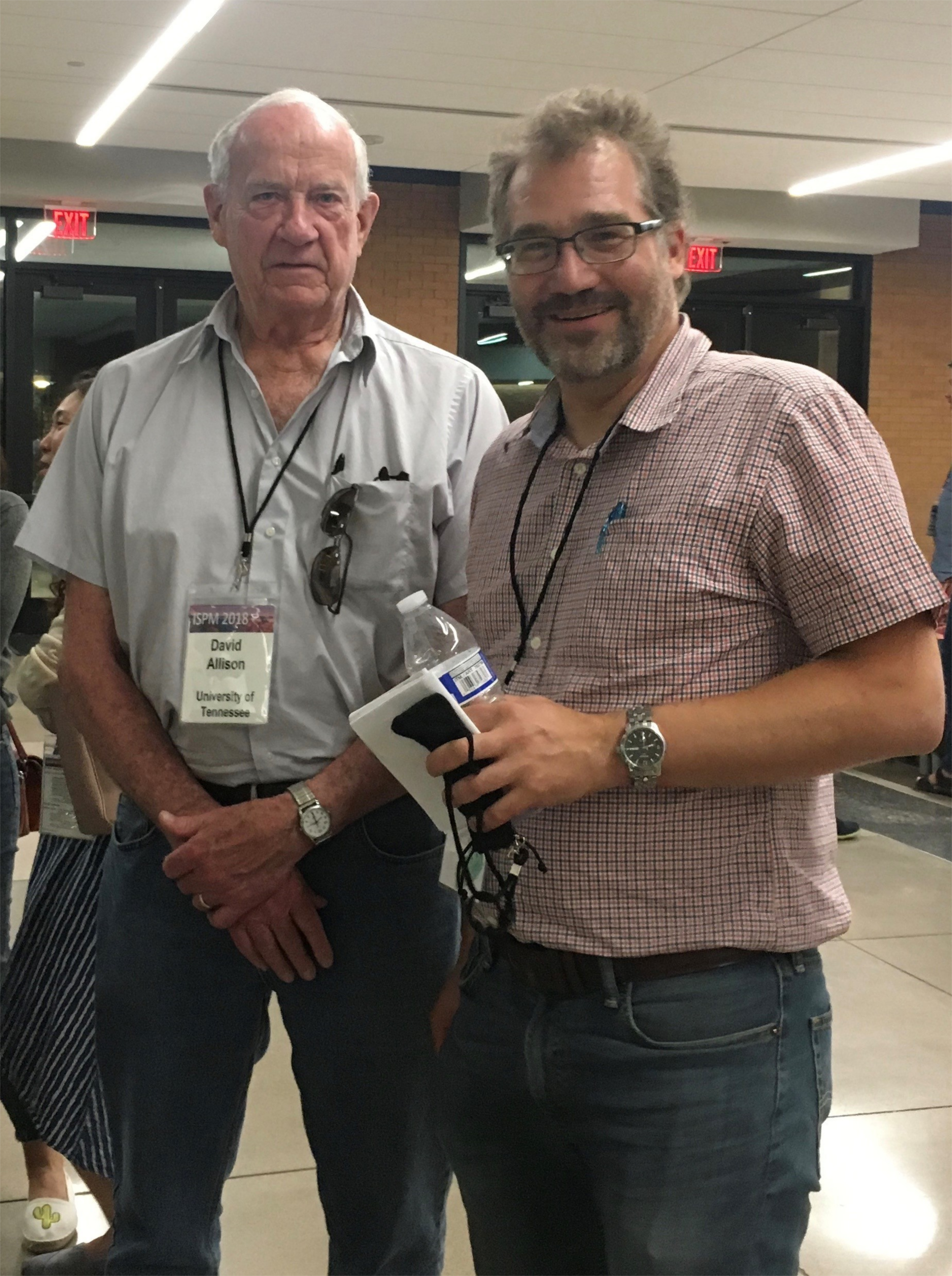This month’s blog is written by one of our co-founders and directors Mervyn Miles who discusses his four favourite talks at the 20th anniversary of the International Scanning Probe Microscopy (ISPM) conference held in Tempe, Arizona.
It is hard for me to believe that this was the 20th conference in the International Scanning Probe Microscopy (ISPM) series, which started in 1999 with the first conference in Seattle organised by Dave Allison. We've put together some fun videos about the twenty ISPM conferences, showing our conference journey, which can be found here.
David Allison and Robert Ros
The ISPM conference of 2018 was held in Arizona State University, in Tempe near Phoenix. It was skilfully organized by Robert Ros with Stuart Lindsay and was a great success both scientifically and in its organisation. The programme and abstracts can be found here.
The conference began with the plenary talk on the first evening given by Paul Hansma (University of California Santa Barbara) - a true pioneer of AFM who has inspired many with the excitement of adventuring into the unknown, including members of my research group in Bristol and also me!
Paul Hansma
Paul talked about the development of AFM from his perspective of having built over fifty instruments. The final part of his talk addressed the problem of chronic pain and how sensitization of the brain is a bigger problem than continuing signals from danger sensors in the body. He has built a new biofeedback device, which can help decrease this effect.
The first regular talk of the conference I would like to describe was by Jennifer Dionne (Stanford university), who unexpectedly couldn’t attend the conference in person but delivered her remarkable talk via Skype - one of the most memorable talks of the conference. It was concerned with the measurement of forces induced by circularly polarised light on a chirally etched AFM tip [1]. A comparison can be made to the paper by my colleague, Massimo Antognozzi (University of Bristol), who has used NuNano extremely soft cantilevers to measure this circular polarisation force directly in an evanescent field [2].
Jennifer Dionne
The second talk I would like to mention is that of John Sader (University of Melbourne) in which he described an impressive method for calculating the spring constant of a cantilever from just measuring the resonant frequency and Q-factor. For rectangular cantilevers, only the width and length need to be entered. So, these constants could be supplied by a cantilever manufacturer such as NuNano with each pack of cantilevers. A description of the method (with references) and even a java app to calibrate cantilevers can be found on John’s website.
John Sader
The concept of Open Science began with Open Access publishing and Open Data. Georg Fantner of the École Polytechnique Fédérale de Lausanne (EPFL) has taken this to the next stage with Open Hardware. In his talk, he described the construction of a photothermally-driven small-cantilever high-speed AFM head, which is compatible with a MultiMode atomic force microscope. He invites everyone who wishes to build this head for non-commercial reasons to visit his lab and construct their own from components that Georg supplies at cost. He believes that Open Hardware can only work in the context of such hands-on experience.
Georg Fantner
No visit to Arizona is complete without a visit to a wild-west town - in this case, the conference went to Apache Junction, and not far away the conference dinner was held on a steamboat cruise around Canyon Lake - beautiful.
Canyon Lake
References
[1] Y. Zhao, A. A. E. Saleh, M. A. van der Haar, B. Baum, J. A. Briggs, A. Lay, O. Reyes-Becerra, and J. A Dionne, "Nanoscopic Control and Quantification of Enantioselective Optical Forces,” Nature Nanotechnology, 12, pp. 1055–1059, (2017).
[2] M. Antognozzi, C. R. Bermingham, R. L. Harniman, S. Simpson, J. Senior, R. Hayward, H. Hoerber, M. R. Dennis, A. Y. Bekshaev, K. Y. Bliokh & F. Nori, "Direct measurements of the extraordinary optical momentum and transverse spin-dependent force using a nano-cantilever,” Nature Physics, 12, pp. 731–735, (2016).
If you liked this blog post, you may also like Why conferences are essential for academics AND entrepreneurs and An interview with Professor Mervyn Miles.







